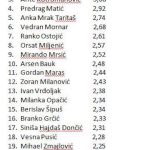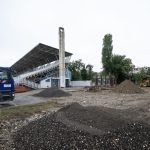Transport Minister Oleg Butković, who headed the government delegation, said that Croatia was honouring all victims of the authoritarian Communist regime, which, he said, had left its mark on Croatia and the Croat people in the 20th century.
It is important to promote the culture of remembrance because, without it, there can be no respect for or awareness of all victims and no reconciliation in the context of every European nation, including Croatians, he said.
Butković: Remains of the infamous prison
Asked if places like Goli Otok and Sveti Grgur could be revitalised for tourism and education, Butković said that the two locations today feature the remains of the infamous prison where people were imprisoned during the Informbureau period (era of Yugoslavia’s history following the Tito-Stalin split in mid-1948), after which other political prisoners were interned there. Before its closing (in 1988), it served as a juvenile detention facility, he said.
Today the prison facilities are in a poor condition due to neglect. The prison complex is big and would require a lot of money to restore, but one of its sections could possibly be used for tourism purposes, as there would probably be interested visitors, Butković said, adding that the government should look into how this could be done, mentioning private investors in that context.
Asked if one of the options was to keep the prison complex in its present state for the sake of history, Butković said that it would be best to keep a part of the complex in its present condition.
Between 17,000 and 32,000 people imprisoned, number of victims not known
The Goli Otok concentration and prison camp also included a penitentiary for women convicts on the nearby Sveti Grgur island. The complex was opened in 1949 after the adoption of the Informbureau Resolution, at the time of purges of the proponents of Stalinism in the Yugoslav Communist Party.
It was later used to imprison other political opponents as well, mostly based on administrative decisions and less on the basis of court rulings.
The complex was notorious for its harsh conditions, including torture and forced labour.
It is estimated that 17,000 to 32,000 people passed through the prison camp, while the exact number of those who were killed or died there has not been determined.
In 1956 it became a penitentiary and later a juvenile detention facility. It was closed in 1988.
The Europe-Wide Day of Remembrance for the Victims of all Totalitarian and Authoritarian Regimes was today also marked in Split, with Split Mayor Ivica Puljak and Split-Dalmatia County deputy head Stipe Čogelja laying wreaths at a location in the city from where political opponents of Communist authorities in the aftermath of WWII were taken away for execution.











